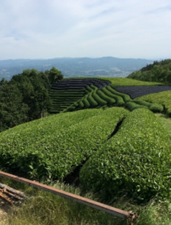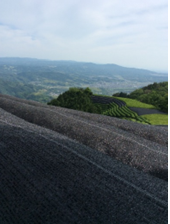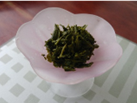Tea plantation in the sky, Tea talk
Yoshie Doi
 |
 |
 |
Tea plantation at OBubu Tea Garden in Wazuka-cho, Kyoto Prefecture Sencha pickled in ponzu sauce
”Obubu Tea Garden“ in Wazuka-cho, the southernmost tip of Kyoto Prefecture
I have visited the tea plantation many times. I am also a tea plantation owner, and I receive tea from here four times a year. Each time, several types of tea are included, and I enjoy freshly picked and roasted tea. It is natural for Japanese people to drink Japanese tea, but the number of fans of Japanese tea continues to increase around the world. The purpose of the tea plantation owner system is that by having your own tea plantation in Kyoto, you can contribute to the local community and society, and it will be an opportunity to spread Japanese culture to the world. We aim to connect with tea lovers.
Japanese tea includes sencha, gyokuro, bancha, hojicha, kukicha, matcha, and powdered tea, but unlike coffee and black tea, I think it is the most suitable tea for Japanese cuisine.
After I use sencha tea leaves for drinking, I put ponzu sauce on it. There is a lot of nutrition left in the green tea leaves, so I would like to make use of them. When you look at the tea leaves, the green is changing and it’s brown green. When I researched what this color was, I was surprised at the number of traditional Japanese colors.
Originally, the four colors of ancient Japan were red, white, blue, and black. I heard from a dyeing artist that “Japanese people have the best sense of color in the world.” Toki-iro and Danjuro-brown are 1,100 kinds of colors that only Japanese people can understand. There is a traditional color called sen-brown, but it is a slightly dark brown color made by roasting green sencha. In the photo above, the color of sencha from garashi is a little brownish.
I also visit them to pick tea leaves, and enjoy a cup of tea while remembering the splendor of the terraced fields on a small hill, which is said to be the tea plantation in the sky. In addition, these days, I feel happy to be able to taste delicious low-pesticide and pesticide-free tea grown in tea gardens with wonderful air and scenery.
The end of document
